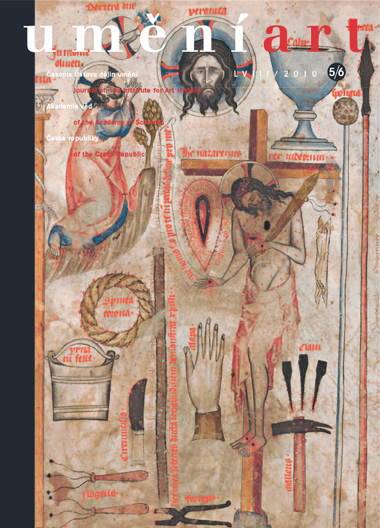Michal Šroněk
Artikulové smluvení na držení kompaktát a teorie náboženského obrazu v době pohusitské
This study examines the situation at the end of the Hussite Wars, when Emperor Sigismund returned to Prague, bringing with him the legates from the Council of Basel, led by Bishop Filibert, and when the question of religious images was discussed. On 27 November 1436 the legates issued a document outlining a list of deviations from the church codes that needed to be addressed. In March 1437 the Synod of the Utraquist clergy discussed the legates' demands and released the Articles of the Compactate Accord, a church code that complied with the demands put forth by the legates on 27 November 1436. However, the 'Articles' differ from the legates' text in the passages pertaining to icons. They outlined the basic areas of devotion focusing on the most important events in the history of salvation - the incarnation at birth, God's sacrifice at the Crucifixion, the confirmation of Jesus' divinity upon resurrection, and the culmination of history at the Last Judgement - and gave recommendations for iconographic themes: the Birth, the Crucifixion, the Resurrection. The legates' demand that 'Quod in ecclesiis sint venerabiles ymagines salvatoris nostri eius genitricis, aliorumque sanctorum et sanctarum' was amplified by reasoning founded on a basic text of Canon Law, the Decretum Gratiani, which defined what icons should not be: they should not be called gods, they should not be served as gods, and they should not be taken as a source for hope in salvation and judgement. Images should serve the positive function of promoting respect for the memory of our holy ancestors. According to the 'Articles', images should not play any active role in the process of salvation, as they have no part in the divinity to which they just refer, and they function solely as memorials and examples, devoid of anything sacred in themselves. This de-sacralisation of the religious image did not reach a head until the European Reformation in the 16th century, but here we see one of the first steps towards the secularisation of society and thought introduced into European culture by the Hussite Revolution.
Full-text in the Digital Library of the Czech Academy of Sciences:
https://kramerius.lib.cas.cz/uuid/uuid:f7b25d48-7cd7-13a0-6e13-be921cf0546e
< back

